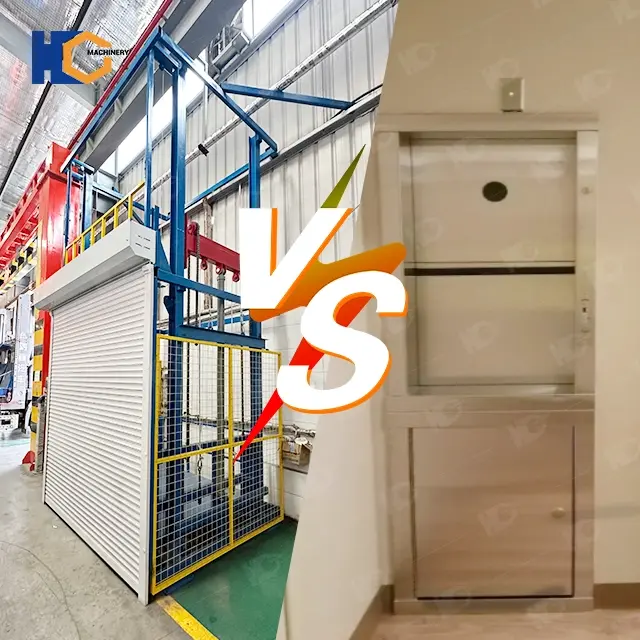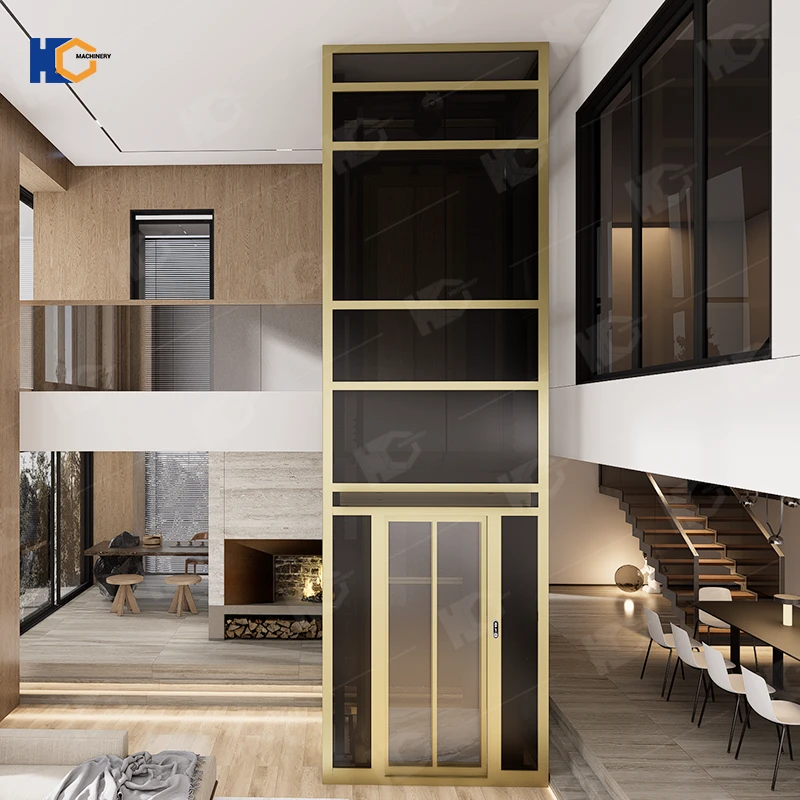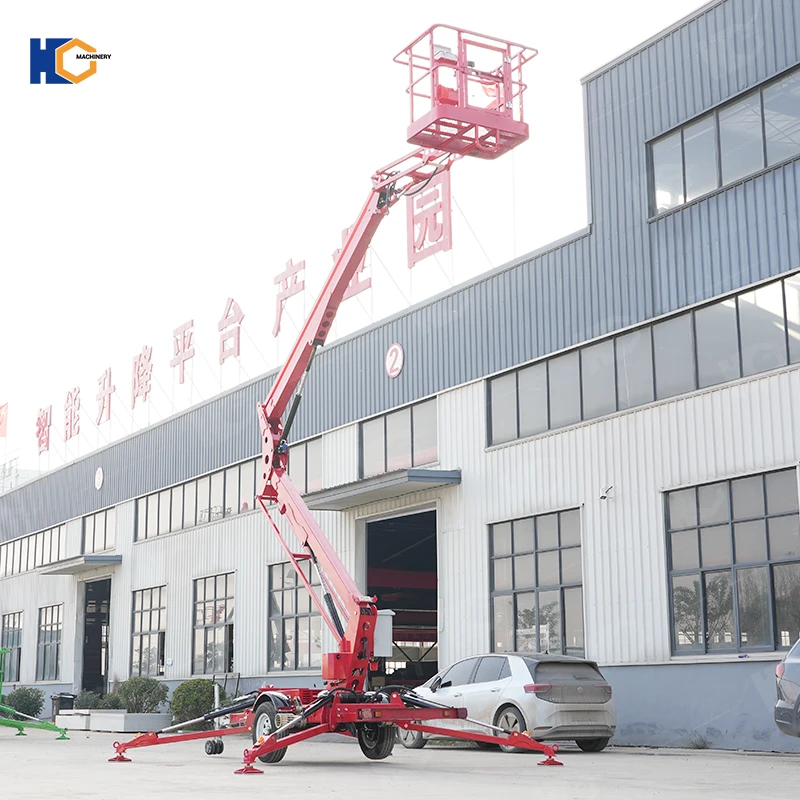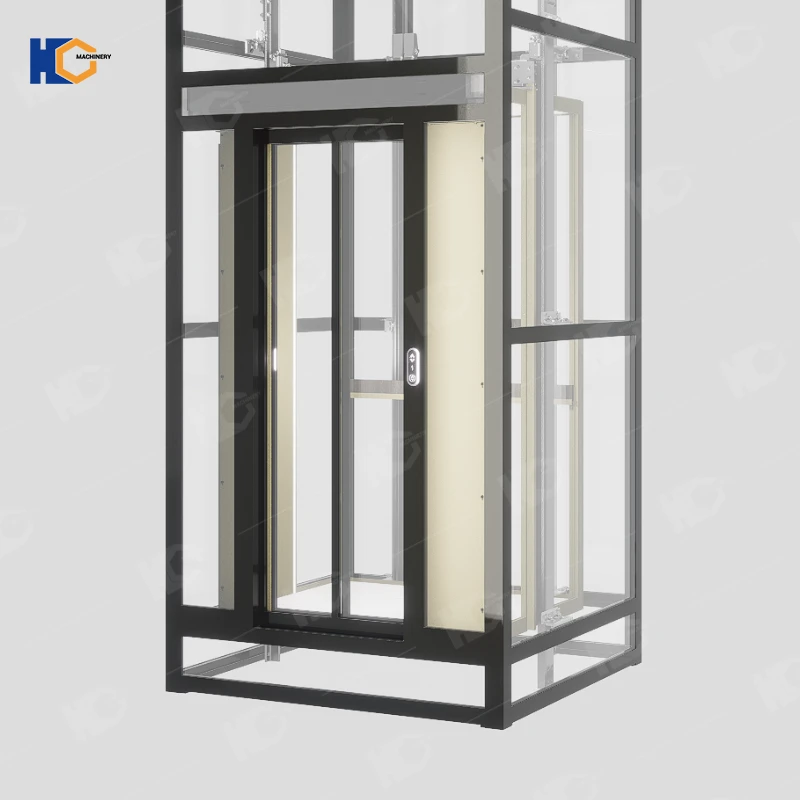In modern buildings—whether commercial, industrial, or residential—vertical transport systems play a crucial role in ensuring the smooth and efficient movement of goods. Among the most common types are small freight elevators and dumbwaiters. While both serve similar functions by transporting items between floors, they differ significantly in capacity, design, application, and cost.
Choosing the right vertical transport system is more than a matter of convenience; it’s a decision that affects operational efficiency, safety, space utilization, and budget. A business that moves heavy inventory on a daily basis may require a durable and spacious freight elevator. In contrast, a boutique restaurant or multi-story home might only need a compact dumbwaiter to shuttle meals, laundry, or documents between floors. Selecting the wrong system can lead to underperformance, unnecessary costs, or even code violations.
Despite some superficial similarities, small freight elevators and dumbwaiters are engineered for very different tasks. Misunderstandings about their capabilities and limitations can result in poor design decisions, project delays, or expensive retrofits. That’s why it’s essential to understand the core distinctions before investing in one or the other.
This article, "Small Freight Elevators vs. Dumbwaiters: Key Differences Explained," provides a detailed comparison to help you make an informed choice. We’ll cover technical specifications, use cases, installation requirements, and cost considerations. Whether you're designing a new building or upgrading an existing one, this guide will help you select the vertical transport solution that best fits your needs.
Definitions and Basic Functions
When planning a building’s internal logistics system, understanding the available vertical transport options is critical. Among the most widely used systems are small freight elevators and dumbwaiters. Although they both serve the purpose of transporting items between floors, they do so in vastly different ways. This section defines each system and explains its primary function, helping clarify which is suitable for your specific needs.
A. What Is a Small Freight Elevator?
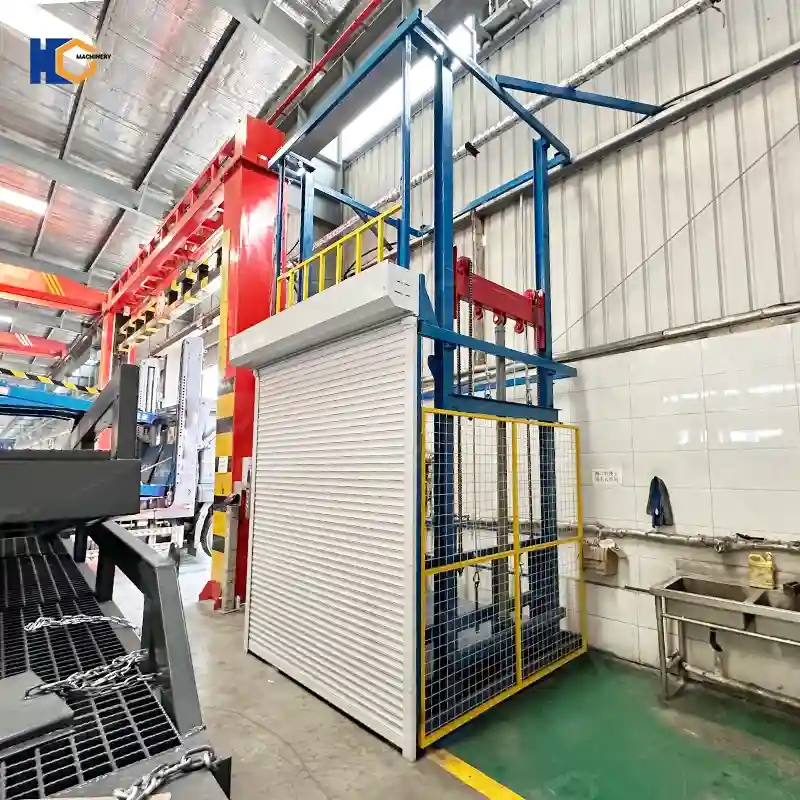
A small freight elevator, also known as a light-duty freight lift or service elevator, is specifically engineered for transporting goods—not people—between floors. These elevators are built to carry a wide variety of items, including crates, tools, stock materials, and equipment, and are commonly used in warehouses, small factories, storage facilities, and retail environments.
One of the key features of a small freight elevator is its load capacity, which is typically much higher than that of a dumbwaiter. While the exact capacity can vary depending on the model and manufacturer, small freight elevators generally handle loads ranging from 300 to over 4,000 pounds. They are designed with reinforced materials, often featuring durable cab construction and heavy-duty doors to accommodate this additional weight.
Another distinguishing feature is size. These elevators are larger in both platform dimensions and shaft requirements compared to dumbwaiters. They may include features like roll-up gates, manual or power-operated doors, and level indicators. Some versions also allow for on-board attendants, though this depends on compliance with local codes and safety regulations.
In most cases, small freight elevators require more structural planning and space than dumbwaiters. They may need a dedicated machine room, pit, or overhead clearance, depending on the model. As a result, installation tends to be more complex and costly.
Small freight elevators are ideal when you need to move bulky or heavy materials across multiple levels of a building, especially in commercial and industrial applications where durability, load capacity, and frequency of use are key concerns.
B. What Is a Dumbwaiter?
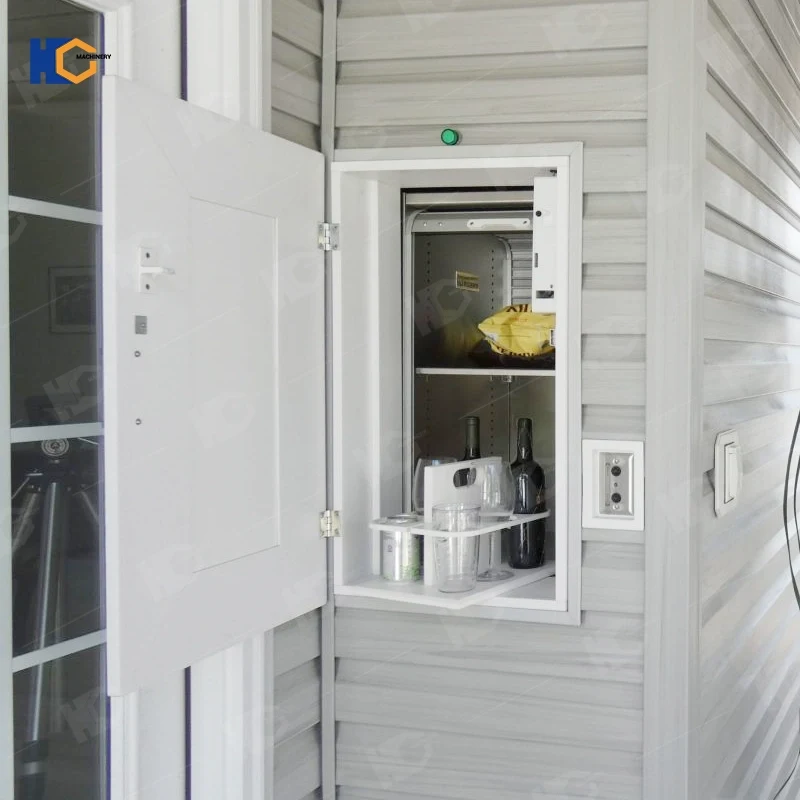
A dumbwaiter is a much smaller, compact lift that is designed to carry light loads between floors. Unlike freight elevators, dumbwaiters are not built for industrial-scale operations or heavy-duty items. Instead, they are best suited for items like prepared food, dishes, laundry, documents, books, and other small packages.
Dumbwaiters are commonly installed in restaurants, hotels, libraries, medical facilities, and private homes. For instance, in a restaurant setting, a dumbwaiter may be used to transport meals from the kitchen to upper-level dining areas or to return used dishes to the kitchen for cleaning. In residential settings, they can serve as convenient tools for moving groceries or laundry between floors.
These lifts generally handle weights ranging from 50 to 500 pounds, with car sizes tailored to accommodate small trays or bins. Because of their lightweight use cases, dumbwaiters are typically constructed from simpler materials and are often less expensive to install and maintain. They also require less space, making them ideal for buildings with limited room for shaft construction or mechanical systems.
Dumbwaiters are usually operated using simple call/send buttons, and they lack the complex control systems found in full-sized elevators. They do not require an operator and are designed for ease of use, often arriving pre-engineered for quicker installation. Safety features, such as interlocks and braking systems, are typically included to prevent accidents during use.
In summary, dumbwaiters are ideal for low-weight, high-frequency transport of small items, especially in environments where speed, convenience, and compact design are priorities.
Understanding the basic functions and differences between small freight elevators and dumbwaiters is essential when determining the right fit for your building’s vertical transport needs. Each serves a unique purpose and is built to meet specific operational demands, which we'll explore further in the next sections.
Key Differences
While small freight elevators and dumbwaiters may appear to serve similar purposes at first glance, they are designed with fundamentally different capabilities and applications in mind. This section outlines the most important distinctions between the two systems, focusing on aspects such as load capacity, size, speed, installation, cost, and regulatory standards.
A. Load Capacity
The most significant difference between small freight elevators and dumbwaiters lies in their load capacity.
Freight elevators are built to carry heavy loads, typically ranging from 300 to over 4,000 pounds. This makes them suitable for moving large, bulky, or heavy items such as inventory pallets, machinery, or equipment in warehouses and retail backrooms.
Dumbwaiters, on the other hand, are intended for light-duty applications, usually supporting 50 to 500 pounds. They are perfect for transporting trays of food, laundry baskets, or documents but are not suitable for heavy or oversized items.
B. Size and Dimensions
Because of their differing purposes, the physical dimensions of these two systems also vary significantly.
Freight elevators require a larger cab size and elevator shaft, as they need to accommodate wider doors, stronger walls, and additional clearance for the loading and unloading of bulky items. They may also include features such as roll-up gates or reinforced doors.
Dumbwaiters have a much smaller footprint. Their compact design makes them ideal for use in tight spaces or retrofitting into existing buildings with minimal structural alterations. Their car sizes are often no larger than a small cabinet or crate.
C. Speed and Travel Distance
Though both systems are designed to move items vertically, their operational speed and distance capabilities differ.
Freight elevators are generally slower due to the heavier loads they carry and the more robust safety mechanisms involved. However, they are capable of serving more floors and covering greater vertical distances, which is important for multi-story warehouses and commercial buildings.
Dumbwaiters are often faster since they carry lighter loads and operate with simpler motors. However, they are generally limited to shorter travel distances, typically between two to four floors.
D. Installation Requirements
The infrastructure required to install these systems differs in complexity and cost.
Freight elevators often require reinforced shafts, a pit or overhead clearance, and sometimes a separate machine room. This type of installation may involve structural modifications and greater design planning, making it more time-consuming and expensive.
Dumbwaiters are easier and cheaper to install, with many models designed for plug-and-play integration. They require less construction and can often be added to existing structures with minimal disruption.
E. Cost Comparison
Another key consideration is the cost, both for initial installation and ongoing maintenance.
Freight elevators tend to be more expensive, with higher installation costs due to structural demands and more complex mechanical systems. Ongoing maintenance is also more intensive, requiring inspections, lubrication, and occasional part replacements.
Dumbwaiters, by contrast, are more budget-friendly, both in terms of purchase price and upkeep. Their simple mechanics and lightweight design result in fewer maintenance needs and lower operating expenses.
F. Regulatory and Safety Standards
Compliance with safety and building codes is essential, but the level of regulation varies.
Freight elevators are subject to strict codes, such as ASME A17.1 and local building and accessibility regulations (e.g., ADA). They often require regular inspections and must be operated under stricter safety protocols due to their load and size.
Dumbwaiters are still regulated, but the requirements are less stringent. While they must meet basic safety standards like door interlocks and braking systems, the overall regulatory burden is lighter due to their limited use and load capacity.
By understanding these core differences, property owners, contractors, and facility managers can make informed decisions about which system—small freight elevator or dumbwaiter—is most appropriate for their specific application.
Use Case Scenarios
Choosing between a small freight elevator and a dumbwaiter often comes down to the specific environment and the type of items being transported. Each system is designed with particular use cases in mind, and applying them appropriately ensures optimal performance, safety, and efficiency.
Small freight elevators are commonly found in warehouses, where they transport heavy pallets or large equipment between floors. In distribution centers, they help streamline logistics by moving bulk inventory quickly and securely. They are also widely used in retail backrooms, where staff may need to move stock, cleaning supplies, or display items to upper levels without blocking customer-facing areas. Their durability and high weight capacity make them ideal for frequent, heavy-duty use.
On the other hand, dumbwaiters are perfect for more delicate and lightweight transport needs. In residential kitchens, they offer a convenient way to move groceries, dishes, or laundry between floors. Multi-level restaurants often use dumbwaiters to deliver meals from kitchen to dining areas, helping reduce foot traffic and improve service speed. In libraries, they efficiently move stacks of books or archival materials between departments, preserving quiet environments while minimizing staff strain.
Each system shines when tailored to the operational context it was designed for.
Choosing the Right Option
Selecting between a small freight elevator and a dumbwaiter requires careful consideration of several key factors. Making the right choice ensures that your vertical transport system meets your operational needs without overspending or compromising on efficiency.
1. What kind of items will you move?
The nature and weight of the items you intend to transport is the most important factor. If you need to move heavy, bulky goods such as pallets, machinery, or large boxes, a small freight elevator is your best bet. These elevators are designed to handle substantial loads safely and reliably. Conversely, if your transport needs involve lighter items like trays of food, documents, laundry, or small packages, a dumbwaiter will be sufficient and more cost-effective.
2. How frequently will it be used?
Consider how often the elevator or dumbwaiter will be in operation. Freight elevators are built for frequent, heavy-duty use, making them suitable for industrial or commercial settings with constant traffic. Dumbwaiters, being lighter and smaller, are better suited for occasional or moderate use in homes, restaurants, or offices where the volume of transported items is lower.
3. What is your available space and budget?
Space constraints play a critical role. Freight elevators require larger shafts, reinforced structures, and possibly dedicated machine rooms, which means they need more room and a bigger upfront investment. Dumbwaiters, with their compact footprint and simpler installation, fit well in buildings with limited space and tighter budgets. Additionally, dumbwaiters typically have lower installation and maintenance costs compared to freight elevators.
By answering these questions honestly, you can narrow down which system aligns best with your building’s requirements and operational goals. Consulting with elevator professionals can also help ensure you make the most practical and compliant choice.
Conclusion
In summary, small freight elevators and dumbwaiters serve different needs. Freight elevators handle heavier loads, require more space, and are suited for industrial or commercial use, while dumbwaiters are compact, cost-effective, and ideal for lighter, everyday items in homes or restaurants. The right choice ultimately depends on factors like the type of load, available space, and specific application requirements. To ensure safety, efficiency, and code compliance, it’s important to consult with elevator professionals during the planning and installation process. Making an informed decision will save time, money, and avoid operational issues down the line.
If you are looking to purchase Small Freight Elevators, welcome to contact Huichuang Lift. We are a professional manufacturer and supplier specializing in hydraulic elevators, home elevators, lift platforms, and related vertical transportation solutions. With our own dedicated factory, we offer customized designs tailored to your specific needs, as well as OEM services to meet unique project requirements.
At Huichuang Lift, quality and safety are our top priorities. Our small freight elevators are built to high standards, ensuring reliable performance, durability, and compliance with industry regulations. Whether you need a freight elevator for warehouses, retail stores, or light industrial applications, we can provide a solution that fits your space and budget.
Our experienced team is committed to guiding you through the entire process—from consultation and design to manufacturing and installation. We pride ourselves on delivering efficient, cost-effective elevators that improve operational productivity and safety.
For more information or to request a quote, please do not hesitate to contact us. Let us help you find the perfect small freight elevator solution tailored to your business needs.
